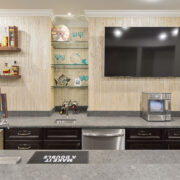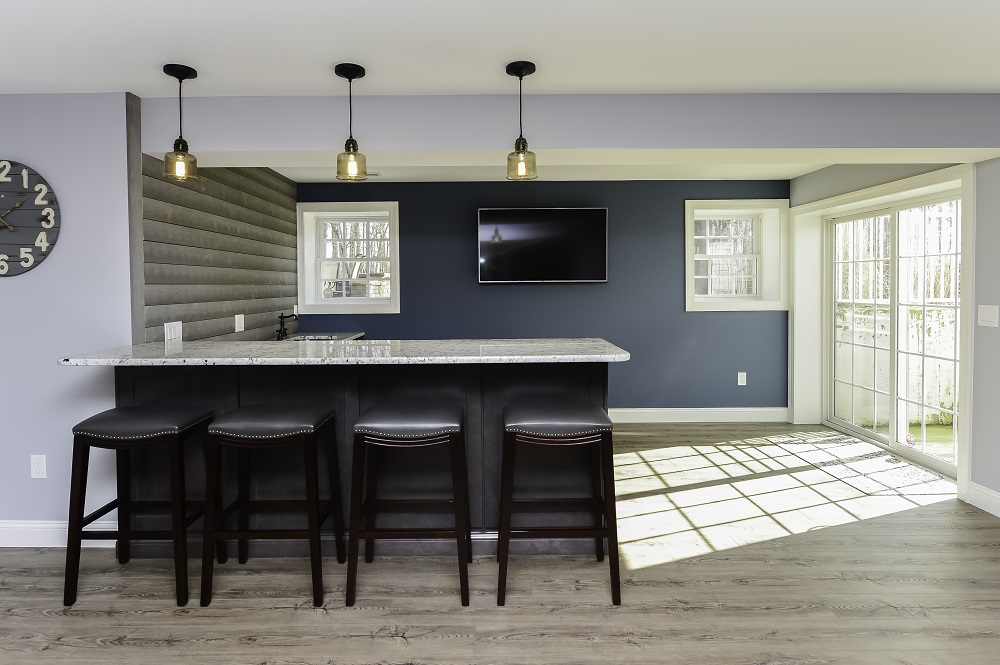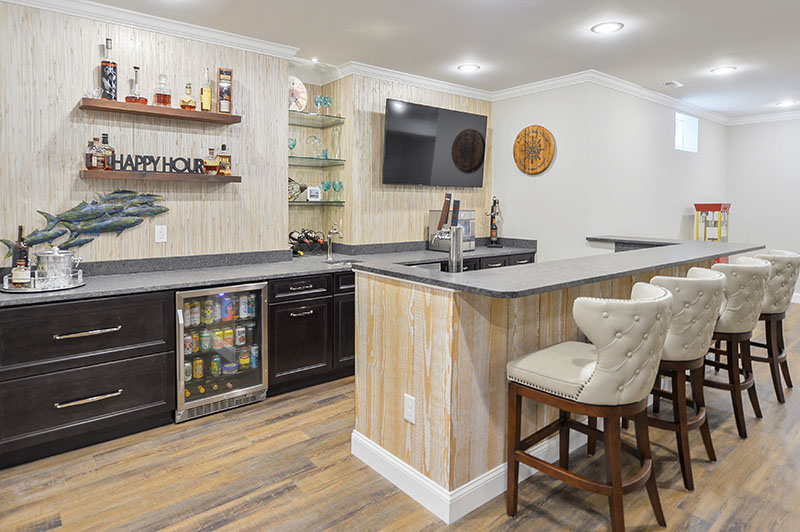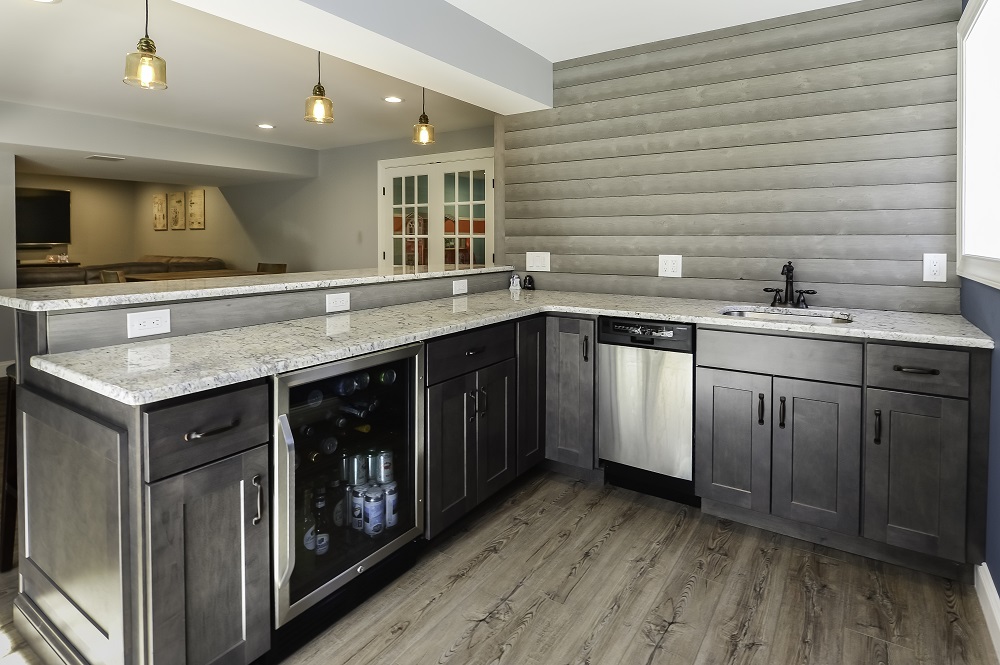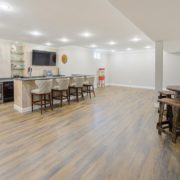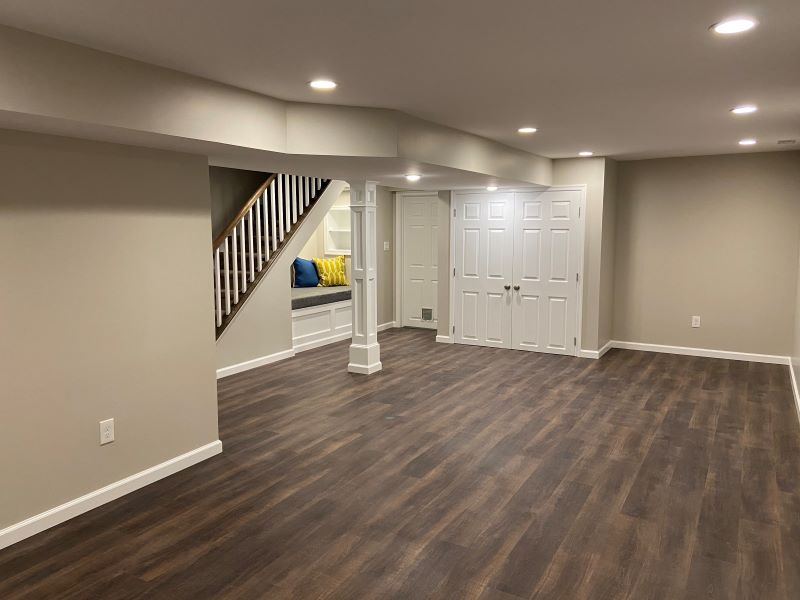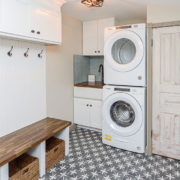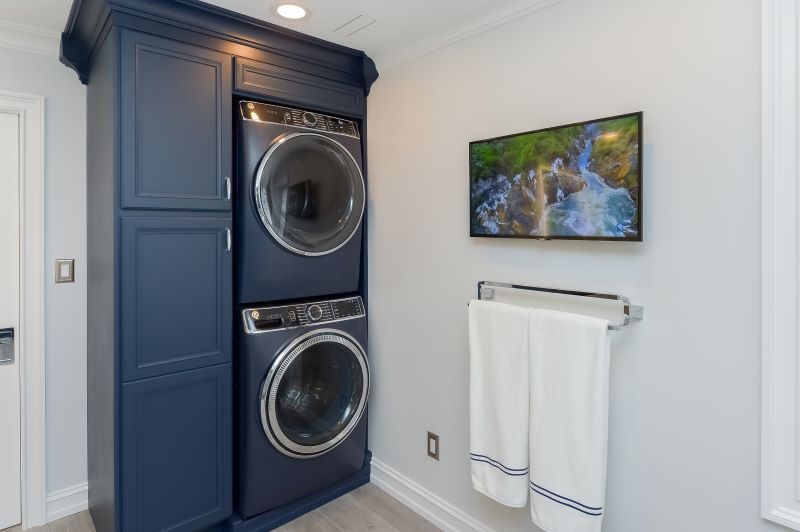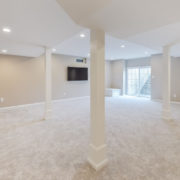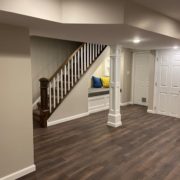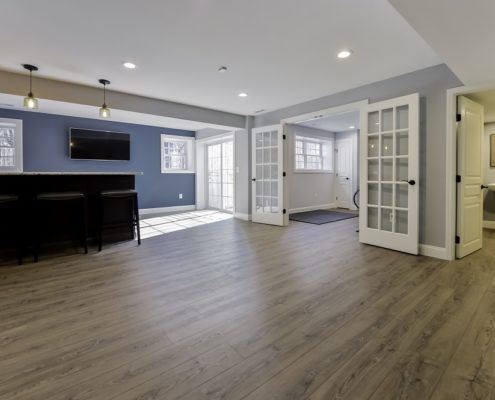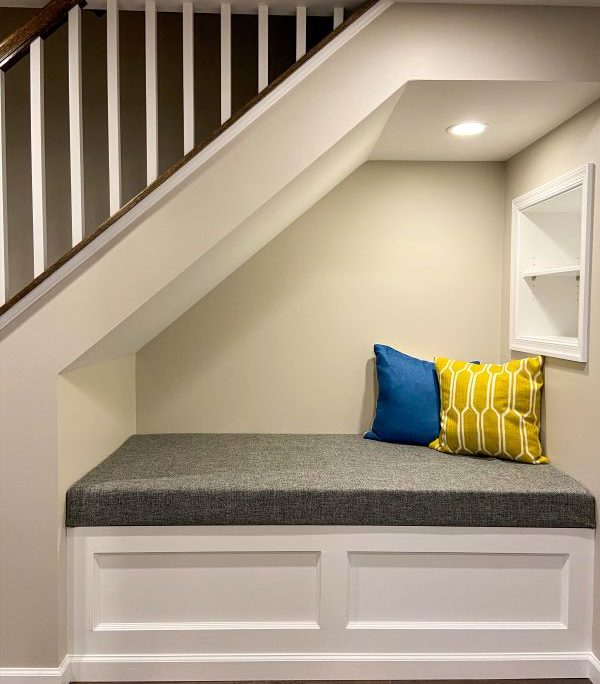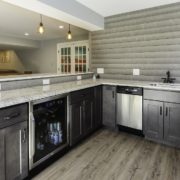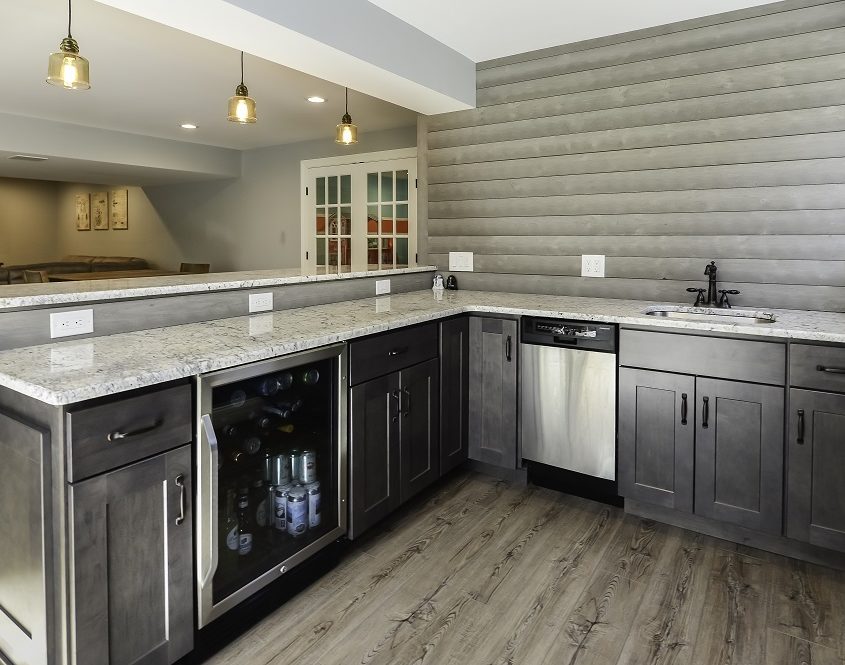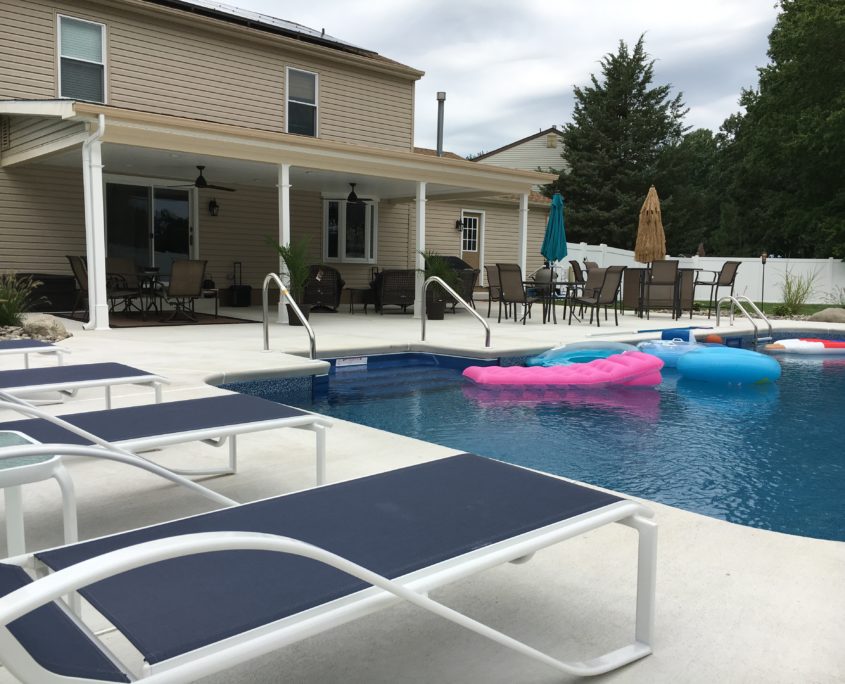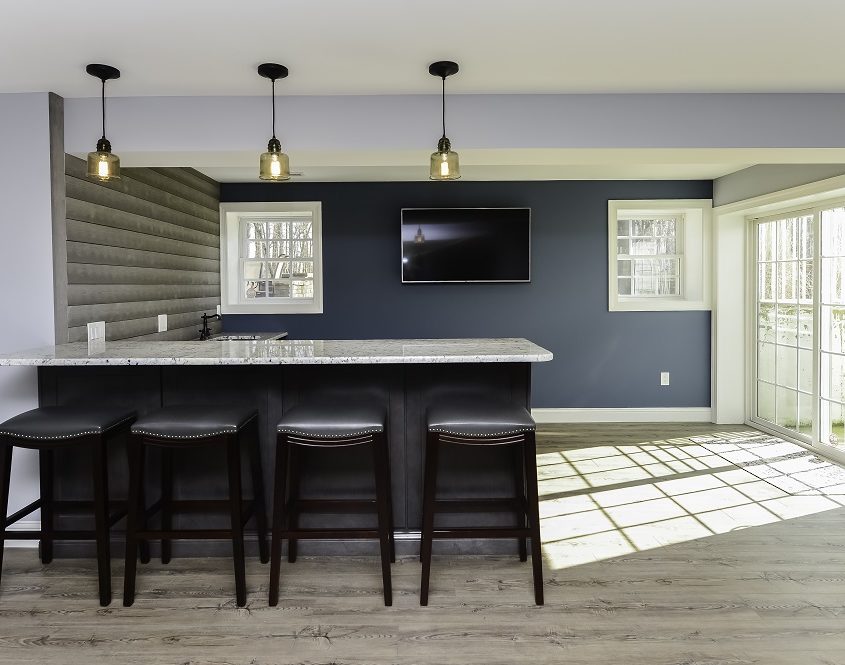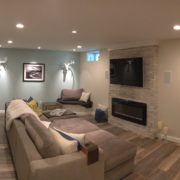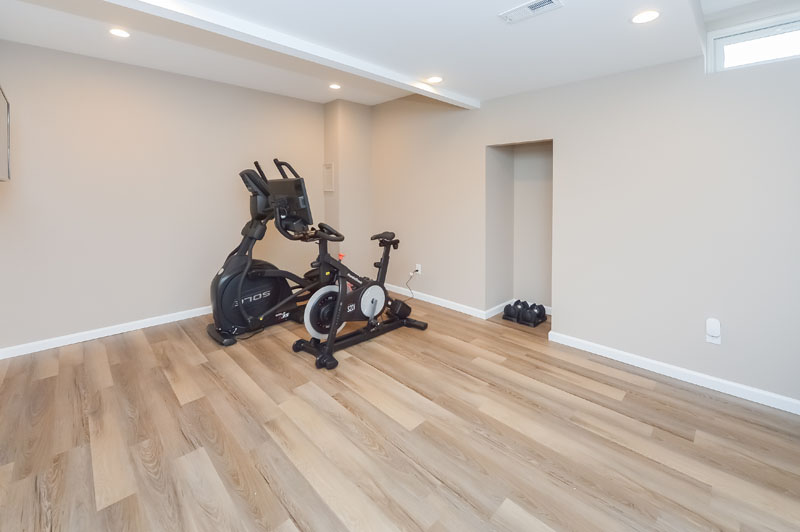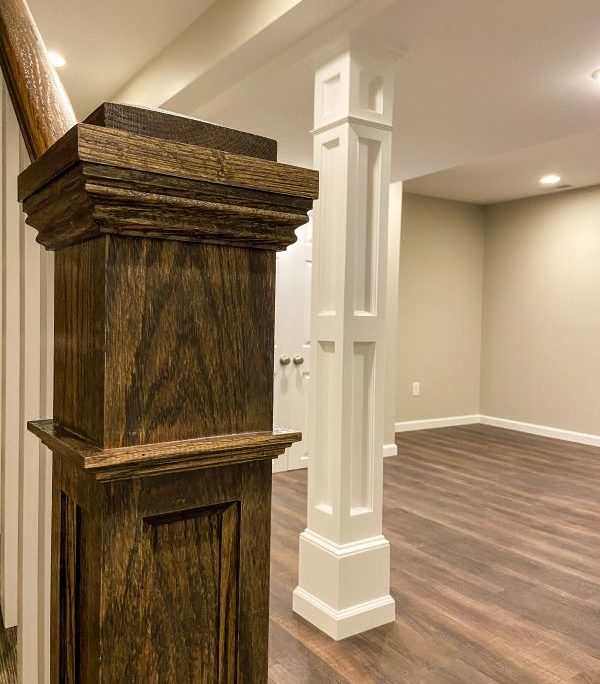The Ultimate Guide to Planning Your Dream Basement Bar in South Jersey
Imagine transforming that unused basement space into the social heart of your home — a custom bar where friends and family gather to create unforgettable memories. Not only does a basement bar add value to your property, but it also offers a personalized entertainment area you can enjoy year-round.
With South Jersey’s unique blend of coastal and suburban aesthetics, a stylish bar can uniquely reflect your taste. This guide will walk you through everything you need to know about planning basement bars, from understanding the basics to choosing the right design and features that suit your lifestyle.
Understanding Basement Bars: Wet vs. Dry
Before diving into design, it’s important to differentiate between the two main types of basement bars: wet bars and dry bars.
Wet Basement Bars
A wet bar is perfect for a basement social hub, complete with a sink and running water. Though the drink-making process is much easier with these commodities, a wet bar does require plumbing. This means you’ll need to factor in the cost of incorporating water lines into your design plans.
While it may add to your initial budget, the convenience of a wet bar can pay off in functionality and style, making it a worthy investment for your home’s new gathering spot.
Dry Basement Bars
For those seeking a more straightforward approach to their entertainment area, a dry bar is an excellent option. Without the need for a sink or plumbing, dry bars are generally easier on the wallet and less complex to install. This simplicity allows for greater flexibility in the design of your new basement bar.
However, it’s worth noting that the absence of a sink means you’ll be making a few extra trips to the kitchen to refill the ice bucket or fetch water for cleanup. Despite this minor trade-off, a dry bar can still serve as a stylish, functional centerpiece for your social gatherings, ensuring your home remains a hot spot for hosting without the added complexities of plumbing.
Basement Bar Designs and Ideas
Your bar should be more than a place to serve drinks; it should also be a reflection of your personality and the character of your home. Whether you’re drawn to the rustic warmth of a traditional tavern or the sleek lines of a modern lounge, the design possibilities are endless. In this section, we’ll explore a variety of popular design themes that can inspire you to create a space that’s uniquely yours.
Classic Pub
For those who appreciate the timeless appeal of a classic pub, incorporating dark woods, rich tones, and brass accents creates an atmosphere of warmth. This design theme pays homage to the quintessential English tavern, where friends gather for a pint and good conversation. The use of deep mahogany for the bar itself can be paired with a backdrop of burgundy or hunter-green walls to evoke a sense of coziness for visitors.
Consider adding brass fixtures for a touch of authenticity, or installing dim ambient lighting to complete the traditional pub feel. By choosing this classic style, you’ll bring the charm of an old-world tavern to your basement bar, creating a space that’s perfect for relaxed evenings and intimate gatherings.
Modern Minimalist
A modern minimalist design can create a space that’s as stylish as it is functional. Embrace the essence of minimalism with clean lines, a monochromatic or neutral color palette, and the use of materials like glass, chrome, or polished concrete. This approach not only exudes a sophisticated vibe but also emphasizes open space and uncluttered surfaces, allowing your carefully curated selection of spirits to take center stage.
The modern minimalist bar is a statement of elegance and simplicity, offering a retreat where the hustle of daily life fades into the background.
Sports Bar
Transform your basement bar into the ultimate game day destination with a sports bar theme. This design is all about celebrating your love for the game, with multiple TVs ensuring you never miss a play, no matter where you’re seated. Adorn the walls with sports memorabilia that showcases your favorite teams or iconic moments in sports history.
Comfort is key, so be sure to include plush seating options that can accommodate all your friends and family as you cheer on your team. With a sports bar in your own home, every match becomes an event.
Wine Lounge
Ideal for oenophiles, a wine lounge theme is a sophisticated choice. Central to this design is an emphasis on wine storage solutions — think climate-controlled wine fridges, elegant racks, or even a custom wine cellar if space allows. The decor should evoke intimacy and refinement, with a color palette that complements the rich hues of wine varieties.
Soft lighting, comfortable yet chic seating, and subtle touches like a tasting table can all contribute to an atmosphere where every sip is a celebration. A wine lounge basement bar is not just a space; it’s an experience, inviting your guests to unwind in style.
Coastal Retreat
Embrace the laid-back vibe of the South Jersey Shore with a coastal retreat theme. Light, airy colors like soft blues, sandy beiges, and crisp whites set the tone for a space that’s as refreshing as a sea breeze. Incorporate natural textures such as reclaimed wood, shiplap, wicker, or rattan accents to add additional character.
Nautical decor elements like ropes, lanterns, and seashell motifs can subtly enhance the seaside atmosphere. This design invites you to kick back as if lounging on the beach, making your bar a serene escape where every day feels like a beach day!
Build-ins and Features
When it comes to creating a basement bar that stands out, it’s the custom features that make all the difference. These personalized touches elevate the functionality of your space while also significantly contributing to its overall aesthetic appeal.
Custom Cabinetry
Custom cabinetry is a cornerstone of a well-designed bar, offering tailored storage solutions that keep your space organized and stylish. Designed to fit your specific collection, these cabinets can house everything from highball glasses to your favorite bourbons, all within arm’s reach. Whether you opt for a classic wood finish or a modern paint job, custom cabinetry can be crafted to complement the overall design, ensuring a cohesive look that’s as functional as it is beautiful.
Refrigeration
No basement bar is complete without the right refrigeration to keep your drinks perfectly chilled! Under-counter fridges are a sleek and space-saving solution, seamlessly integrating into your bar’s design while keeping mixers and beer at the ideal temperature. For wine enthusiasts, a dedicated wine cooler ensures that each variety is preserved at its optimal degree.
And for those who love the pull of a fresh pint, consider installing a keg to enjoy draft beer on tap. These refrigeration features contribute to the professional feel of your home bar, literally making it a cool spot to unwind.
Lighting
The right lighting can transform your basement bar from ordinary to extraordinary, creating an ambiance that complements your gatherings. Pendant lights hanging elegantly over the bar area provide both a focal point and functional illumination for mixing drinks.
For a more modern twist, LED strip lighting can be installed under the bar or along shelving to add a subtle, contemporary glow. Whether you’re going for a warm, intimate atmosphere or a vibrant party vibe, the strategic use of lighting will set the perfect tone for your basement retreat.
Sound System
No basement bar is complete without the right ambiance, and a built-in sound system is key to setting the mood. Integrating speakers into your bar area ensures that your music blends seamlessly into the background.
For the ultimate entertainment experience, consider pairing your bar with a home theater setup to transform your basement into a mini cinema on movie nights.
Gaming Area
Carve out a space for a classic pool table, a foosball setup, or a selection of other favorite games to keep your guests entertained for hours. You can choose for this spot to be the focus of your bar or a complementary feature — it’s entirely up to you!
As a bonus, a gaming zone encourages interaction and adds an element of fun to your social gatherings. By integrating this playful area into your basement bar area, you’re creating a complete entertainment experience. From game nights to casual hangouts, your home will be the go-to spot!
Bar Tops and Stools
When choosing a bar top, you’re selecting the face of your social hub. Durability should be your top priority, as this surface will endure spills, the clink of barware, and countless interactions. Materials like granite and quartz offer a hardy surface that resists scratches or stains.
On the flip side, wood bar tops bring warmth and a classic feel; when treated properly, they can last for many years. Custom concrete bar tops are also gaining popularity, offering a unique, customizable option that stands up well to wear and tear.
Similarly, stools should be chosen not just for their style but also for the comfort they provide. Look for stools with adequate support, especially those with backrests or armrests that offer more comfort for extended periods of sitting. The height is also crucial; there should be enough space between the stool seat and the bar top for guests to sit comfortably without hunching over or feeling cramped.
Storage Solutions
Shelving is a versatile storage option that can be tailored to your bar’s aesthetic and functional needs. Open shelving serves a dual purpose, allowing you to display your impressive collection of spirits and liqueurs while keeping them easily accessible. For those who prefer a tidier appearance, closed cabinets offer a sleek solution, concealing barware behind doors for a clutter-free environment.
Drawers might be less visible than shelves, but their contribution to a well-organized basement bar is invaluable. They provide the perfect home for smaller items such as utensils, cocktail napkins, stirrers, and coasters. Dividers can be added to keep everything in its place, ensuring that you’re never rummaging through clutter to find a bottle opener or a wine stopper. With everything in its rightful place, you can focus on what truly matters — crafting the perfect drink and enjoying the company of your guests!
Build Your Basement Bar with Ayars
Ready to create your basement bar escape? We’d love to hear your vision. Let’s toast to creating your forever home.

